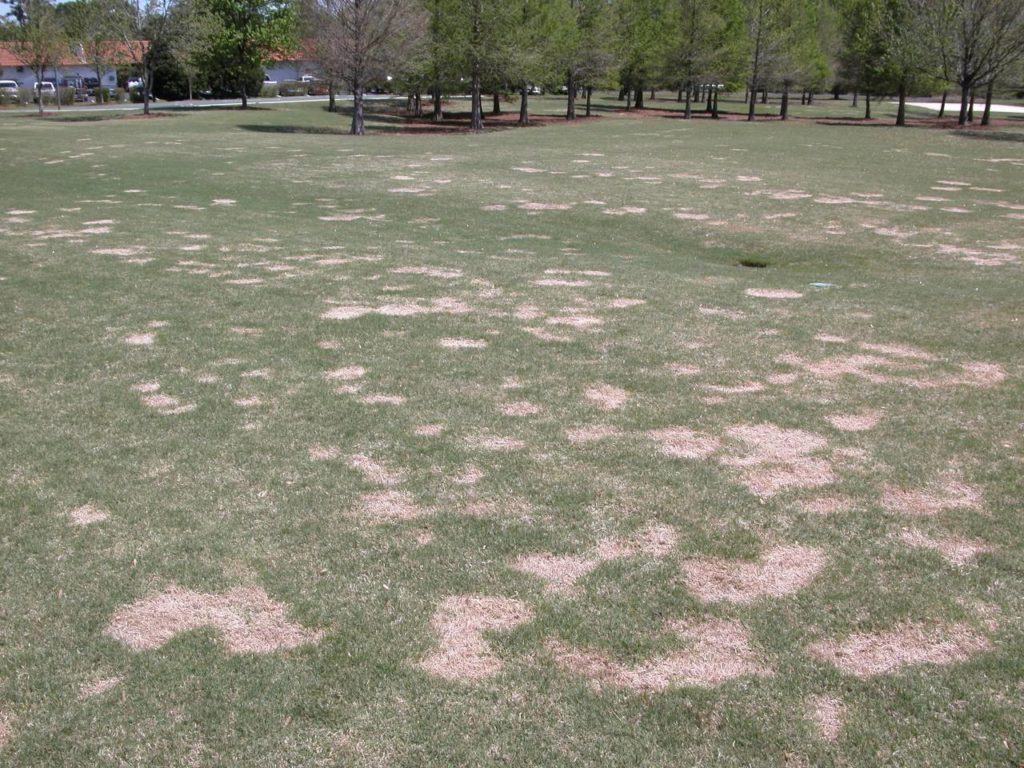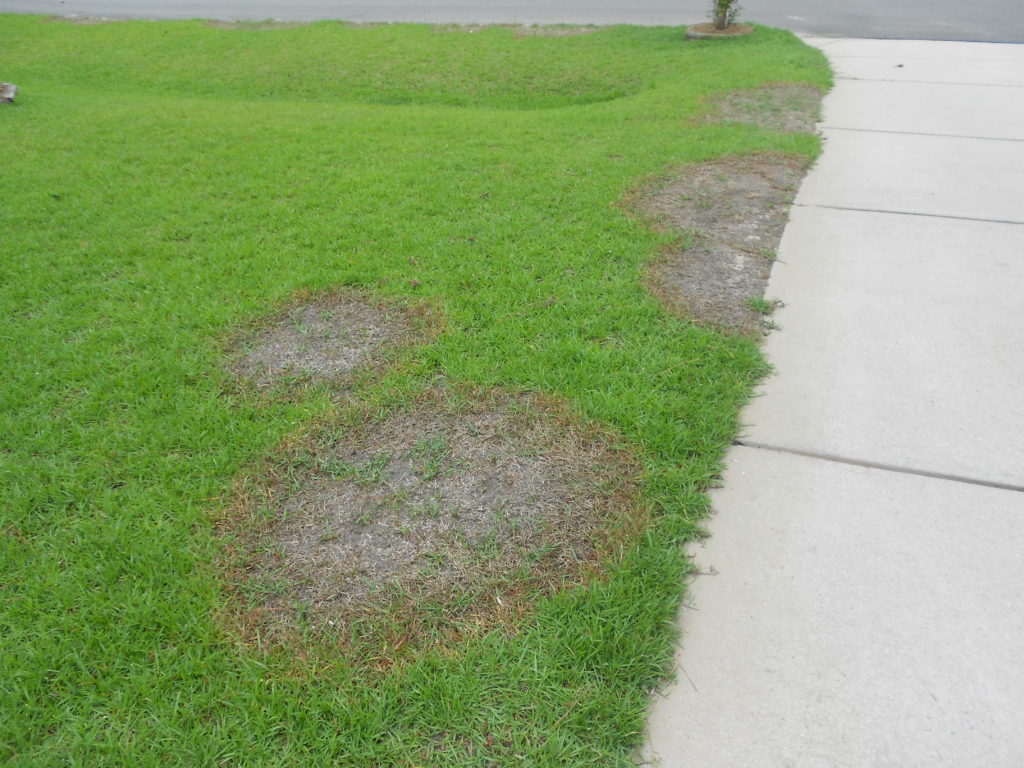Time to Treat for Spring Dead Spot & Large Patch
go.ncsu.edu/readext?736270
en Español / em Português
El inglés es el idioma de control de esta página. En la medida en que haya algún conflicto entre la traducción al inglés y la traducción, el inglés prevalece.
Al hacer clic en el enlace de traducción se activa un servicio de traducción gratuito para convertir la página al español. Al igual que con cualquier traducción por Internet, la conversión no es sensible al contexto y puede que no traduzca el texto en su significado original. NC State Extension no garantiza la exactitud del texto traducido. Por favor, tenga en cuenta que algunas aplicaciones y/o servicios pueden no funcionar como se espera cuando se traducen.
Português
Inglês é o idioma de controle desta página. Na medida que haja algum conflito entre o texto original em Inglês e a tradução, o Inglês prevalece.
Ao clicar no link de tradução, um serviço gratuito de tradução será ativado para converter a página para o Português. Como em qualquer tradução pela internet, a conversão não é sensivel ao contexto e pode não ocorrer a tradução para o significado orginal. O serviço de Extensão da Carolina do Norte (NC State Extension) não garante a exatidão do texto traduzido. Por favor, observe que algumas funções ou serviços podem não funcionar como esperado após a tradução.
English
English is the controlling language of this page. To the extent there is any conflict between the English text and the translation, English controls.
Clicking on the translation link activates a free translation service to convert the page to Spanish. As with any Internet translation, the conversion is not context-sensitive and may not translate the text to its original meaning. NC State Extension does not guarantee the accuracy of the translated text. Please note that some applications and/or services may not function as expected when translated.
Collapse ▲Written by Halle Hampy, M.S. candidate under the direction of Dr. Jim Kerns
Despite the unpredictability of 2020, one thing that remains reliable is the changing of the seasons. It’s that time of year in North Carolina when soil temperatures have reached their peak and begin to drop again. For warm-season turfgrass managers, this is the optimal time to prepare for pathogens that infect in the fall and induce symptoms in the spring, such as spring dead spot and large patch.
Spring Dead Spot
Spring dead spot (SDS) is one of the most devastating diseases of bermudagrass and zoysiagrass in the transition zone of the US. It can affect grass maintained at various heights such as lawns, athletic fields, golf course fairways, tees, and putting greens. Management of this disease requires preparation because the pathogen infects during the fall and predisposes the plant to winter injury. Symptoms do not appear until the following spring as these grasses green back up.
Spring symptoms include circular or irregular patches of dead foliage (~6 inches to several feet in diameter) and are most severe in shaded areas and north-facing slopes. Areas of compaction or poor drainage also favor spring dead spot development. The pathogens are most active when temperatures are between 75 and 60oF and optimal infection has been observed at 65°F (Dr. Nathan Walker, Oklahoma State University). Thus, we suggest applying fungicides when soil temperatures drop to 70oF in the fall. It is imperative to follow soil temperatures for timing the first application as we do not know if calendar-based applications that start earlier are effective.
After initiation of the first application, the second application should be made 21 to 28 days thereafter, until soil temperatures fall below 55oF. Our trials on bermudagrass putting greens have shown excellent results applying the second application 21 days after the first. In order to be most effective, products should be irrigated in with at least 1/8 inch of water immediately after application.
For more information on this disease, including control recommendations, please visit: Spring Dead Spot
Large Patch
Large patch affects warm-season turfgrasses such as centipedegrass, St. Augustinegrass, zoysiagrass, and bermudagrass (although bermudagrass usually grows out of the disease by itself without harm). Symptoms develop either in the spring or in the fall and become most prominent after periods of cool, wet weather. In years with extreme rainfall, symptoms can persist into late spring and early summer. Preventative management with fungicide applications depends on the species of grass.
For zoysiagrass, fall applications should be initiated when soil temperatures decline to 70°F for five consecutive days. For centipedegrass and St. Augustinegrass, the first preventative fall application should start when soil temperatures decrease to ~80 to 75°F, especially when soil moisture is high.
Two well-timed applications may provide season-long control of large patch in many situations. Recent research from Dr. Brandon Horvath at the University of Tennessee demonstrated that applications should be applied in at least 2 gal / 1000ft2 in order to be effective.
For more information on this disease, including control recommendations, please visit Large Patch.




